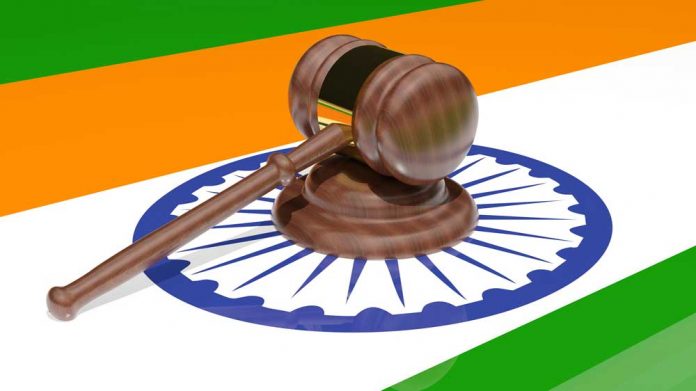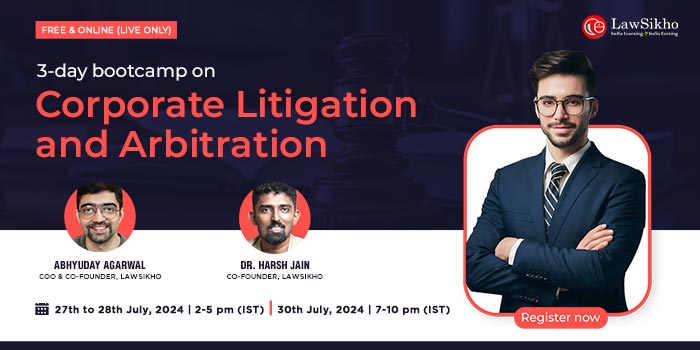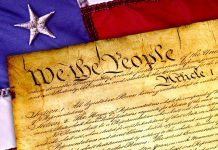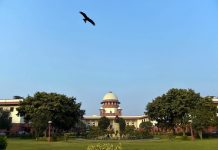This article has been written by Yash Dahiya and further updated by Debapriya Biswas. It analyses the landmark judgement, NALSA vs. Union of India, 2014 with a critical perspective while also highlighting the effects of this judgement in the current times.
Table of Contents
Introduction
For over a century, transgender individuals have faced immense discrimination due to not conforming to the traditional ‘male’ and ‘female’ roles set by society. The struggles that they faced due to such discrimination and prejudice against them are multifaceted and profound, encompassing social, legal, and personal challenges. From societal stigmatisation to discriminatory policies, transgender individuals often contend with a lack of acceptance and understanding. In this article, we will explore the struggles faced by transgender people and how it was first addressed in India through the case of NALSA vs. Union of India (2014).
Details of National Legal Services Authority vs. Union of India
Petitioner
- National Legal Services Authority (Herewithin referred to as NALSA)
- Poojaya Mata Nasib Kaur Ji Women Welfare Society
- Laxmi Narayan Tripathy
Respondent
- Union of India
Coram
- Justice K.S. Radhakrishnan
- Justice A.K. Sikri
Citation
AIR 2014 SC 1863
Background of National Legal Services Authority vs. Union of India
Despite what many people in society may believe, genders are not restricted to only males and females. Other genders as well as sexual identities also exist and for the longest time, they have been side-lined by being tormented and discriminated against due to them not conforming to the social perception. The transgender community, or the TG community, is one of them.
Transgender, as one might be aware, is an umbrella term that can be used by anyone who does not conform to the traditionally ‘male’ or ‘female’ gender roles. This includes those who are gender fluid as well as even the people who are agender. Intersex people are also included under this umbrella, making the term transgender a broad concept that covers the whole aspect of the ‘third’ or ‘other’ gender.
Unfortunately, while the concept of transgenders is quite progressive, they are not accepted as readily or widely as the traditional gender roles in society. Instead, transgender people face a lot of abuse and violence just because they don’t come under the universally recognized genders i.e. males and females. They are tortured and do not enjoy the same freedom and rights which the citizens enjoy, let it be basic healthcare or education without discrimination. They are shunned and defamed by society and are considered as untouchables. They are considered and accused as a liability and pain for the nation.
After years of such abuse and torment, a writ petition was filed in the Hon’ble Supreme Court by the National Legal Services Authority, which is a statutory authority that provides free legal aid to the disadvantaged and unprivileged sections of society and resorts to solving their grievances. The organisation works for the betterment of society and thus the petition was filed with the aim to recognize transgenders as a third gender under the law alongside the other binary genders i.e. male and female. Poojaya Mata Nasib Kaur Ji Women Welfare Society and Laxmi Narayan Tripathy who is a renowned Hijra activist also filed a petition. Thus, in totality, two writ petitions for the same cause were filed separately in 2012, which were later heard together due to the similar subject matter.
The petitions were filed because the non recognition of the transgender community, due to their differing gender identity and sexual orientation, stands to be a violation of their fundamental rights enshrined under the Constitution of India, such as Article 14 (Right to equality) and Article 21 (Right to life and liberty), as well as many other basic human rights enshrined under several international conventions and treaties that shall be discussed later in the Article. Transgender people enjoy the same rights and freedoms as cis-gender people, and not recognizing them is a serious violation of such rights.
Historical background of National Legal Services Authority vs. Union of India
The concept of transgenders, let it be Hijras or Kinnars, is not a new or modern one, despite what one might think. The manner in which this community is viewed varies from culture to culture, but almost every culture has some depiction of the transgender community in their history or even mythology, let it be positive or negative. This can be seen especially in Indian mythology.
Mythological Perspective
As mentioned earlier, mythology plays a major role in the formation of culture and the beliefs as well as rituals surrounding it. In Indian mythology, depictions of transgender people are very common. However, despite its frequent occurrence, the depiction of transgender people is not quite clear or explicitly highlighted. In both folk-tales and mythological texts, a lot of humans as well as Gods or spirits, are shown to be fluid in their gender identity; with their genders either vaguely mentioned or their pronouns changing with every situation.
One of the more popular of these would be the example of Princess Amba from Mahabharata. Within the epic, she was a princess who had her life ruined by Bhishm, a prominent character from the same story. To get her revenge, she gained a boon that allowed her to be born as a transgender, or a trans-male, in her next life to kill Bhishm. In the same epic, another character named Budh was cursed to be born ‘without a gender’ as a result of their mother’s infidelity. In a manner, Buddha can be claimed as an agender representative, which also comes under the umbrella term of transgender.
In addition to this, the genderless God Buddha was also depicted to be married to Ila in Mahabharata, who was portrayed to be born as a prince that turned princess in specific circumstances – another depiction of the transgender community in the epic.
In other mythological texts like Ramayana, transgenders are mentioned more explicitly. In this epic, Ram, while going into exile with his wife Sita and brother Lakshman, asked his followers to return to the city. His wordings, while kind, only addressed the ‘men and women’ of the crowd, which was noticed by the Hijras as they found this loophole in order to still follow him to exile. Their action and cleverness impressed Ram a lot, who in turn gave them the power to be able to bless any auspicious occasions like marriages, childbirth, etc. This part of the epic soon became a cultural aspect in Hinduism for both the cisgender and transgender people, which included the Hijras, Kothis and Aravanis.
In many such Hindu mythology and other religious texts, Aravanis, out of all the other transgender people, had the strongest and most mentioned presence. This includes the Kama Sutra, which is hailed as an ancient Hindu text detailing different sexual behaviours and positions. Not only it is a quite progressive text given it was written sometime between 400 BCE and 200 CE, but also quite accepting of queer people like the transgender community, the lesbians and the gays.
The ancient text mentions both homosexuality and transgenders alongside heterosexuality in a very normalised manner, without any negative portrayal. Even in some religious Hindu texts like Rigveda, direct interpretations by many philosophers have shown the correlation between homosexuality and transgenders in their texts. The transgender community has been addressed as ‘tritiyapakriti’ or the third gender, which plays an important part in Vedic and Puranic literature. The term ‘napunsaka’ has been used to show the absence of procreative capability of a person. There are many forms of Shiva, one of which is when he merges himself with his wife Parvathi to become Ardhanari, a very important figure in the Hijra community. In Mahabharata, Aravan son of Arjun and Nagakanya offers himself to be sacrificed to Goddess Kali so that the Pandavs can win the war. But it was in one condition that Aravan had to spend the last day of his life in matrimony.
Unfortunately, Aravan could not find any woman who would agree to marry him as no woman wanted to marry a man who was going to die the next day after marriage. To resolve this issue, Lord Krishna stepped up and transformed himself into his female counterpart, whom we know as ‘Mohini’, to marry Aravan. Many Hajiras from the Transgender community of Tamil Nadu consider Aravan their ancestor and call themselves Aravanis. Hijras also held important positions in courts and posts in administration during the Mughal era in India from the 16th to the 19th century. They had religious authority and gave blessings in religious ceremonies.
Social Perspective
Given the mythological depiction of the transgender community, it can be concluded that the concept of transgender is not modern, just more defined and recognised now. While earlier it only existed as a vague concept, it is now defined and categorised under more detailed terms for the identification and validation of the members of the TG community. However, this does not mean that transgender people only existed in folklore and no one identified as one in the olden times.
A detailed analysis of the historical background of Hijras in the Mughal era is in the book of Gayatri Reddy, “Sex: Negotiating Hijra Identity in South India” – Yoda Press (2006). This book gives clear evidence of the role of eunuchs or transmen in the courts of many Asian emperors, including the Mughal harem. In fact, the role of transgender was mentioned to be quite important in the Mughal harem, given how men were not allowed in the spaces of the harem except the young princes or the emperor himself. Moreover, many Mughal emperors are suspected to have sexual relations with transgenders and other males, as speculated by many historians.
It was the onset of colonial rule that brought the change in society regarding the treatment of the transgender community. The early European travellers in the 18th century could not fathom why the Hijras were given so much respect in the Courts and other prominent institutions, while the rest of the world shunned them for their non-traditional identity.
This extended to the second half of the 19th century when the British colonial administration tirelessly tried to criminalise the Hijra community and deny them civil rights by criminalising homosexuality and labelling it as ‘against the law of nature’. This conservative view of the British colonial government resulted in the complete denial from acceptance of the transgender community from Indian society. As their rigid Christian religious beliefs were preached, the Hijras and other transgender people were pushed aside to be classified as a separate ‘tribe’ or ‘class’ of their own in different parts of India by the colonial administration.
Due to such drastic changes in societal perspective, the representation of the transgender community in the ancient texts and folklore was overwritten and removed to fit the ‘normal’ narrative of only male and female as the two existing genders. Adding the criminalised status of homosexuality, the position of not only the transgender community but the queer community as a whole was dragged down in society as their very existence was held as unnatural.
With the enforcement of Section 377 of the Indian Penal Code, 1860, transgender and homosexuality were not only treated as something illegal and ‘against the law of nature’ but also unholy and sinful [However, the same was decriminalised in the year 2019]. This resulted in the narrative against the transgender community being so widespread that the oppression of people with different sexuality and/or gender identity was already ingrained as a common societal behaviour. By the time people started standing up against it and the reasoning behind this mentality was questioned, it had already been over a century.
Because of such severe discrimination, transgender people did not even have voting rights until the year 1994. Before 1994, they had to identify as either of the two recognised genders, without which they were not allowed to vote. Due to the lack of legal recognition of transgender individuals as a third gender, they also faced a lot of ambiguity and uncertainty in legal procedures.
This ambiguity also resulted in difficulty in accessing medical care since biological information like gender identity was crucial for many such healthcare facilities. Even other basic facilities like education were hindered due to a lack of legal recognition for transgenders. It was not until 2013 that a mass protest was made by famous transgender activists like Gopi Shankar Madurai and Swapna in Madurai Collectorate that these issues were brought to the forefront of the media.
Facts of National Legal Services Authority vs. Union of India
As mentioned earlier in the article, the transgender community has faced a lot of discrimination and violence and still continues to do so even in the present times. They are not allowed medical, educational and many other facilities that other genders can access readily. Due to such severe discrimination, it makes transgender people more vulnerable to abuse and harassment along with severe exploitation, which is violative of not only the fundamental rights enshrined in the Indian Constitution but also several basic human rights established by International conventions and treaties India is a part of, which will mentioned in detail later in the article.
This case, which was filed as a Public Interest Litigation (or PIL) filed in 2012, by National Legal Services Authority. It raised these very points with the aim to recognise transgender people officially as a third gender. Such recognition in the eyes of the law could help in curbing the discrimination faced by the TG community by both society and the legal provisions that governed marriage, adoption, inheritance, succession, taxation, and welfare, which primarily depended on whether or not you are a male or a female.
Since the determination of gender was conducted at an individual’s birth, based on their biological sex, it often did not account for the individual’s gender identity. This later resulted in social and legal turmoil for the transgender individual, as they face discrimination across various walks of life due to their nontraditional identity. Thus, to address this issue, the petition was filed in the Supreme Court by NALSA, who became the primary petitioner, followed by the other petitioners.
Issues of National Legal Services Authority vs. Union of India
The issues that arose before the Supreme Court of India were as follows:
- Whether the non-recognition of the Transgender Community was affecting their fundamental rights under the Constitution of India;
- Whether a person who is born of one sex, changing their sex through surgery should be identified as the other gender (ex: born male but identifies as a female and vice versa);
- Whether there should be an inclusion of a ‘third’ gender to categorise the Transgender Community.
Arguments and reasoning
Petitioner’s side
As mentioned earlier in the article, NALSA was the first and original petitioner of this case, who was later joined by several interveners. They collectively argued that currently, only males and females were recognized under the Indian legal provisions, given how he or she pronouns prevailed over the usage of more gender-neutral pronouns like ‘they’ that could be used for more inclusivity.
The fact that legal measures to protect and cater for the needs of transgender people were lacking was glaringly obvious and contradicted several fundamental and constitutional rights, which included the right to life and liberty, the right to freedom of expression and the right to be protected from discrimination. The petitioners further argued their points by ironing out how each Constitutional provision was violated.
As already known by many, Article 14 of the Indian Constitution enshrines the right to equality, which includes equality before law. This can be extended and interpreted to protect the Transgender community, who are discriminated against based on their gender identity and sexual orientation. Meanwhile, Article 15 specifies protection against discrimination based on sex, race, religion, etc by the State and any other citizen along with the protected grounds such as, restaurants, wells, roads, shops, public grounds, etc., on which restrictions based on such discrimination was prohibited.
Furthermore, Article 16 of the Constitution was also raised as being violated by not legally recognising transgender people as the third gender. This Article states that every citizen of India shall be given equal opportunity in terms of public employment without any discrimination against their sex, race, caste, etc. This could include different gender identities as well as sexual orientations, as seen in the Transgender Community. However, as we have already seen and established, transgender individuals were not given equal opportunities for jobs, education or even medical care due to blatant discrimination due to their non-conformity to the traditional gender roles.
On the other hand, Article 19 of the Constitution guarantees the citizens of India the right to freedom of speech and expression, to form associations and unions, etc. By not legally recognising the transgender community, transgender people are deprived of such rights and freedoms that they cannot even express themselves freely, let alone form support groups and associations to help each other. In essence, this is one of the most important fundamental rights of the Constitution, without which an individual cannot have their overall development in mental, physical, emotional and spiritual capacity.
As it has been seen many times, transgender people are not even allowed to dress in the manner they would like or want to because it is claimed to be against the comfort or view of society, which is a direct violation of freedom of expression. Article 19 includes the freedom of expression, which can be in a variety of forms, let it be through one’s behaviour, dress, words, action or any other manner.
Article 21 of the Indian Constitution also acts as one of the most important fundamental rights, which is interpreted most extensively by the Judiciary to protect personal life and liberty. Just as any other human, transgender people also have every right to live a dignified life with personal liberty and respect. This includes the freedom to live as they want, without any discrimination. Freedom to express one’s gender identity and sexual orientation without oppression can also be identified as an important aspect of Article 21.
In addition to these, the petitioners also listed the many international laws being violated due to such nonrecognition. Most of these laws originated from international treaties and conventions that are made or started by international Human Rights organisations like the United Nations (UN). The UN is an international organisation which was founded in 1945 after World War II to promote peace, security, cooperation, and friendly relations among countries. With its primary goal to prevent conflicts and provide humanitarian aid, the UN has been upholding human rights globally for more than a few decades. After the emergence of the UN, many other international human rights organisations (both governmental and non-governmental) were founded that shared the same goal as the UN. The conventions, treaties and agreements made by these organisations are then ratified or signed by other countries, making them a part of the standardised international law.
The petitioner, in this case, argued that while India was a part of many such treaties and agreements as a signatory, we still were not following the regulations set by the said international laws, some of which are listed below:

- Article 6 (right to life);
- Article 7 (prohibition of torture or cruel, inhuman or degrading treatment and punishment);
- Article 16 (recognition before the law);
- Article 18 (right to freedom of thought, conscience and religion);
- Article 19 (right to freedom of opinions and expression);
- Article 26 (equality before law without any discrimination);
- Article 2 (right to live without discrimination);
- Article 3 (right to life);
- Article 5 (Prohibits torture or cruel, inhuman or degrading treatment and punishment);
- Article 6 (recognition before law);
- Article 7 (equality before law);
- Article 19 (right to freedom of opinions and expression);
- Article 23 (right to work, employment and wages without discrimination);
- Principle 1 (universal enjoyment of human rights);
- Principle 2 (rights to equality and non-discrimination);
- Principle 3 (right to recognition before the law);
- Principle 4 (right to life);
- Principle 6 (right to privacy);
- Principle 9 (right to treatment with humanity while in detention);
- Principle 18 (protection from medical abuses);
- Article 2 (right to life);
- Article 3 (prohibition of torture);
- Article 8 (right to respect for private and family life);
- Article 10 (freedom of expression);
- Article 14 (prohibition of discrimination);
- Articles 31 and 32 (Application and Interpretation of International Conventions signed by a nation).
The Petitioners also argued that Article 51 of the Constitution was also not followed, which clearly stated that the State shall honour the international law and conventions. This also extended to treaties that India is a part of, which are clearly mentioned above.
Due to the continuous violation of these basic human rights for almost a complete century, the transgender community has suffered through a lot of violence and harassment. Once transgender individuals are legally recognized as a third gender, not only would their quality of life improve but also the discrimination against them would diminish with proper legal remedies that were, at the time, only available to the cis-gender people.
In addition to this, it would become easier and more validating for them to fill out medical and legal forms without fretting over which sex to choose. An accurate little box stating ‘transgender’ would help them a long way, especially in the case of medical care. With the necessary legal recognition, transgender individuals will be able to enjoy all the rights that cisgender citizens get to enjoy without even undergoing surgery to medically reassign their gender.
Respondent’s side
The arguments presented by the Respondents, on the other hand, to defend their stance at not recognising transgenders as an official third gender at the time was that the governments of several states of India were working to set up an ‘Expert Committee on Relating to Transgender’, who shall overlook such issues and prevent discrimination against the transgender community. Even the governments of many states and union territories stepped up to argue that they have taken significant steps to help the transgender community and focused on their welfare and upliftment through schemes and several programmes.
Unfortunately, while these points were made, no actual result could be shown to support the so-called improved status and upliftment of the Transgender Community. The actual recognition through legal provisions or even the improvement of their living conditions was not noticeable at all despite all the claims made by the Respondents.
Judgement in National Legal Services Authority vs. Union of India
The judgement was given on April 15, 2014, by a divisional bench, constituting Justice K.S. Radhakrishnan and Justice A.K Sikri. The judgement held by the bench relied heavily on the opinions and precedents set by many Courts of foreign nations, including the Courts of Australia, New Zealand, Malaysia and even the English Courts following the common law. Firstly the Court emphasised the concept of psychological sex rather than biological sex. In other words, the focus was made on ‘psychological sex’ or the gender identity an individual may identify with. It can differ from their biological sex and that is where the Transgender Community stood.
The Court talked about the case of Corbett v. Corbett (1970), with its complete emphasis on biological sex and its difference from psychological sex. The Court also highlighted the case of Attorney-General v. Otahuhu Family Court (1971), which talks about New Zealand’s standard requiring surgical and medical procedures to effect a transformation. Based on these precedents, the divisional bench held that gender recognition should not be based on the biology of an individual or the biological sex they were born with. Instead, the full importance should be given to the ‘psychological sex’ or the gender identity an individual identifies themselves with.
Before getting into the constitutional harms it is imperative to mention Para 53 of the judgement, which explicitly states that the provisions of any international convention, treaty or agreement that are not inconsistent with the fundamental rights enshrined in the Indian Constitution shall be read together in harmony. It is also said that all those principles discussed on transgenders and international conventions including Yogyakarta principles, which are consistent with the fundamental rights of the Constitution of India, must be recognized and followed. Transgender people are suppressed and are often faced with discrimination in various aspects of life including health, employment, etc. The State has the obligation to protect its citizens and care for their welfare and these citizens include the Transgender Community.
The Court referred to Part 21 of the United Nations Convention against Torture and Other Cruel Inhuman and Degrading Treatment or Punishment, 1984, wherein it is stated that states are obliged to protect all persons regardless of their sexual orientation and/or transgender identity. The Court acknowledged the fact that there is an absence of legislation in the country and it was, therefore, necessary to follow International Conventions as a suitable guideline to frame the much-needed legislation for Transgender people.
The Supreme Court held that transgenders, just as any other citizen of India, fall within the purview and protection of the Indian Constitution. Thus, they should also be able to enjoy all the rights and freedoms as enshrined under the Constitution. These rights include Article 14, the right to equality, which can be enjoyed by any person regardless of their gender identity or sexual orientation. In fact, their citizenship also does not matter for an individual to enjoy this right.
In simpler terms, transgender people are entitled to equal rights and opportunities in education, employment, medical care, etc as any other citizen. They are equally protected under law and any discrimination against them on the grounds of their sexual orientation and/or gender identity shall be violative of this Article.
Similarly, Article 15 also protects transgender people from discrimination on public facilities and grounds while also giving the state the power to make provisions for their upliftment. The Court interpreted Article 15 (4) in the context of this case, stating that the transgender community has faced injustice and discrimination for over a century, making them both socially and educationally backwards. Thus, the State is bound to take proper action to provide a remedy to them.
The Court further declared that Article 19 (1) (a), which protects the right to freedom of speech and expression, also includes a person’s right to express their gender identity and sexual orientation through behaviour, word, dress, action or in any other manner. This Article protects an individual’s freedom to self-identity, self-determination of gender, privacy and personal integrity without the interference of another. The right to self-determination and personal integrity were specifically emphasised.
According to the Court, Article 19 protects not only one’s right to declare and determine their own gender but also the integrity and autonomy of their body and mind. Similarly, the transgender community also has the right to live a dignified life with personal liberty, as enshrined under Article 21 of the Constitution.
The Court also ruled that both the Central and State governments are obligated to legally recognise and acknowledge male, female and transgender as the three official genders. The judgement emphasised the need for full legal recognition for transgender individuals, ensuring their entitlement to healthcare, education, and other civil rights that are enjoyed by every other Indian citizen.
The Court ordered all government documents such as PAN cards, passports, ration cards, etc., to add transgenders as the third gender. The Court further held that as citizens of India who faced injustice for centuries, the transgender community are fully entitled to get the benefit of all schemes and programs launched by the Government irrespective of their population.
In his part of the judgement in the NALSA case, Justice Radhakrishnan highlighted the suffering faced by the transgender community, stating how our society often overlooks the pain and struggles of the transgender community, failing to understand the challenges they face in their daily lives. Only because of their nontraditional gender roles due to their gender identity being dissimilar from their biological sex, they are shunned and exploited. This reflects a societal reluctance to accept diverse gender identity and sexual orientation and according to Justice Radhakrishnan, this mindset needs to change.
From the opening lines of Justice Radhakrishnan, talking about the moral failure of the general public and society’s unwillingness to contain or embrace different gender identities, down to Justice Sikhri’s cognizance of the painful process of transitioning from one gender to another, the judgement shot through with empathy and understanding that both the judges hoped the society could reflect as well.
Thus, with this, the Court held that the Hijras or Eunuchs shall be treated and legally recognised as ‘third gender.’ In addition to this, the Court also issued several instructions to the Centre and State Governments, which included the establishment of dedicated HIV Zero-Surveillance Centers, separate public toilets for transgender people and proper providence of healthcare to transgender individuals in hospitals. They were also directed to create several social awareness schemes for the betterment and welfare of the transgender community as well as to educate the public about the challenges they face, while working towards restoring the respect and trust that the transgender community once enjoyed.
Principles laid down in National Legal Services Authority vs. Union of India
In this landmark judgement, the Hon’ble Supreme Court laid down two major principles or rights:
Right to self-determination
As mentioned earlier in the article, the right of self-determination of one’s gender signifies the right of an individual to declare and decide their own gender identity. It is a freedom most integral to one’s self-expression and identification. The Court highlighted how vital the role of self-determination is and how it lies at the core of the concept of identity. Every human is entitled to the right to determine their self-worth and identity, which shall lead to the realisation of one’s own abilities and the opportunities presented with a clear mind.
This Right was exclusively recognised under Article 19 (1) (a), which enshrines the right to freedom and expression. Every individual has the right to express themselves and that includes the self-declaration of one’s gender identity and sexual orientation. The Court also held that the right to self-determination is inherent to one’s right to life and personal dignity; thus, meaning that it is protected under Article 21 of the Indian Constitution as well.
Right to personal integrity
The other principle laid down in this landmark judgement was the right to personal integrity, which signifies an individual’s right to their body, mind, and soul. The Hon’ble Supreme Court highlighted how every person is entitled to the integrity of the physical and mental aspects of personhood. In simple terms, it means that an individual has complete rights and autonomy over their personhood, which entitles them to the right to privacy of their own body, mind and thoughts. It is a crucial right, without which the overall development of any human can be hampered.
As held in one of the earliest cases of transsexual rights Goodwin v. United Kingdom (1937), the legal recognition of one’s identity, including gender identity, shall be within the freedom of their determination rather than being dependent based on any medical, hormonal or even psychiatric treatment. No transgender person shall be forced to undergo sex reassignment surgery against their will or financial means just for the official recognition of their gender identity.
Forcing an individual to undergo any such treatments or surgeries to attain legal recognition of their gender identity not only violates their right to privacy and body autonomy under Article 21, but also negatively affects their physical and mental well-being. Transgender individuals should have the right and say whether they wish to undergo any invasive medical procedures for the purpose of sex reassignment.
Critical analysis of the judgement in National Legal Services Authority vs. Union of India
Well, we cannot ignore the fact that the TG community for long have suffered and gone through torture, humiliation, and pain. They kept quiet and suffered, but finally, through this judgement, the condition of the transgender community has improved. This judgement has made an impact not only in India but throughout the world. The exclusion of the TG community from participation in society is a major human rights issue. India follows democracy and democracy includes everyone irrespective of their deformation, condition, etc. Everyone should be treated equally and should get equal protection of the law if we go by the three conditions of the Rule of Law, which includes equality.
And while the judgement encapsulates that quite well, there are still some flaws in it. The word ‘Transgender’ is an umbrella term used for people whose gender identity does not match their biological sex or the gender assigned to them at birth. In the case of India, there are a variety of identities, such as Kothi, Transman, Kinner, etc., that are not clearly outlined or mentioned in the judgement. A comprehensive list of replies by commentators and collectives has been posted. In one of them, Gee Imaan Semmalar offers an analysis of the text of the judgement and its possible implications. He terms the judgement as ‘confusing,’ and it combines several transgender identities, for example referring to all Hijras as ‘third gender.’ It is pointed out that in one aspect it tries to promote self-identification but in another way, it is trying to promote more psychological tests.
In simpler terms, while the judgement uplifted the Transgender community with its recognition as the third gender, it failed to highlight the different varieties and spectrums that exist within the Transgender community as well. It does not only include Hijras, as the judgement only managed to mention them as synonymous to transgender. This kind of generalisation leads to both ignorance and a vague legal stance regarding other transgender identities within the community.
In addition to that, the Yogyakarta p rinciples were not accepted in their true spirit and letter. The issue of sexual intercourse too wasn’t looked deep into. The need for separate detention facilities was not taken into consideration. It also doesn’t check on the atrocities of the Transgender community by the police, who do not listen and solve the grievances of the TG community. Thus, the judgement does not address a comprehensive and long-term solution to the challenges faced by the transgender community. Instead, it only focused on the primary aspects of health and education, which, while important, are only the first and basic steps.
While some may fail to recognise it as much of a big issue, this lack of comprehensive and long-term solution could lead to difficulty in the implementation of the judgement by both the State and the Central governments. Especially in the current circumstances where most of the Indian society and government lack insight and understanding of the sufferings faced by the TG community.
In other nations like Australia, the Sex Discrimination Act, 1984 acts as the major legislation to protect its citizens from gender-based discrimination. In 2013, this Act was amended to introduce protection from discrimination based on one’s gender identity and sexual orientation. This included the protection of transgender as well as intersex people from any kind of discrimination based on their identity in many areas of their public life. This Act was also accompanied by the Australian Government Guidelines on the Recognition of Sex and Gender which provided the Australian government a guideline on how to conduct proper tests to maintain identity security and for the policies regarding transgender and other queer identities.
Meanwhile, the Canadian Human Rights Act, 1977 protects the general public of Canada from any gender-based discrimination. It was not until recently in 2017 that the Act was amended to add provisions to protect people with different gender identities and sexual orientations from discrimination. Other identifiable and marginalised groups were also added to protect from such discrimination, which included disabled people as well.
Ireland, on the other hand, has the Gender Recognition Act, 2015 which protects transgender people from discrimination based on their gender identity or sexual orientation while also empowering them with the right to self-declare their gender. The Act not only protects the right to privacy of transgender individuals but also gives them the right to declare their own gender at attaining the age of majority; that is, 18 years. Children younger than the said age, especially those in 16 to 17 years of age can also legally change their gender as per the provisions of the Act.
Similarly in New Zealand, legislations were introduced to protect and empower the TG community, which includes the Births, Deaths, Marriages, and Relationships Registration Act, 2021 which allows transgender people to change their gender legally on all government and official documents without any medical assertion or procedure. Conversion Practices Prohibition Legislation Act, 2022 is another Act that helps protect the citizens of New Zealand from the inhumane practices of conversion therapy along with other kinds of discrimination based on their gender identity and sexual orientation.
In all the nations above, proper legislations were brought in for the protection of their transgender citizens, which also empowered them to self-declare their gender as well as directed the government to set guidelines on how to protect the said marginalised community. In India, however, while the NALSA judgement did set the whole thing in motion, there were yet any strict guidelines to be followed. The instructions given by the Judiciary were quite vague in its essence and were, thus, hardly followed through. The effects of this judgement will be covered in the next segment, where we will also discuss in detail the implementation of the directions given by the Hon’ble Supreme Court and the challenges that were faced during such implementation.
In the end, 15th April 2014 stands to be a crucial day for the transgender community. It’s a very important step and plays a very important role in protecting human rights. And while there is still a long way to go to get equal social recognition for the transgender community, this day became the first stepping stone to the whole journey.
Effects of the judgement in National Legal Services Authority vs. Union of India
After this landmark judgement, a lot of things were set in motion. From public awareness campaigns to schemes to protect the welfare of the Transgender Community, a lot of changes were seen as an after-effect of this case. Since the Court focused on self-determination for gender identification more than biological records, the idea of gender identity being different from biological sex slowly spread through the minds of all Indian citizens.
In addition to this, Indian Courts now started to interpret the legal provisions in both civil and criminal fields in a more gender-neutral manner for easier inclusion of all genders. The official recognition of Transgender people as a third gender helped in acting as a stepping stone to curb the discrimination faced by many queer people in the country.
One such case includes the case of Navtej Singh Johar v. Union of India (2018), where the constitutionality of Section 377 of the Indian Penal Code was challenged. In this case, the Hon’ble Supreme Court struck down the part, criminalising consensual adult intercourse between same-sex couples, which not only helped legalise homosexuality but also validated other gender identities and sexual orientations, like transgender people. And since this particular legal provision was often used to harass people of the TG community as well, its decriminalisation curbed that as well.
Another such case that was affected by this landmark judgement was Jasmine Kaur Chhabra v. Union of India & Ors. (2022), where a PIL was filed to bring attention to the lack of proper public bathrooms or toilets for the TG community. Since transgenders were now recognised as a third gender, they also had a right to have separate toilets than the other two genders. In this case, the Delhi High Court directed the government to construct such toilets within the given time frame. The Delhi government followed through and by 2023, a total of over 296 toilets for transgender people were being constructed, of which 102 were already completed, and the rest were still under construction.
Other than this, since the rights of transsexual people were also discussed now alongside the other minority communities, a lot of welfare schemes were passed by both Central and State governments, like the Transgender Pension Scheme by the Government of Himachal Pradesh and SMILE or Support for Marginalised Individuals for Livelihood and Enterprise by the Central Government, which includes the sub-scheme Comprehensive Rehabilitation for Welfare of Transgender Persons.
Another major development that can be attributed to the effect of this judgement was the introduction of Transgender Persons (Protection of Rights) Act, 2019 or the ‘Transgender’ Act. This legislation aimed to not only protect the welfare of the Transgender community but also criminalise any kind of discrimination against them, based on their gender identity or sexual orientation. The Act also establishes the recognition of transgender people as the third gender and the certification needed for such recognition. Unfortunately, this is exactly where the main criticisms of the legislation lie.
While the Transgender Act aims to protect and empower the TG community, it also acts as a barrier for the same community it tries to protect. Section 7 of the Act states that for an official change in gender and name, the transgender individual needs to undergo a sex-reassignment surgery as given in Section 6 and request a gender verification certificate from the District Magistrate. Subsequently, the application is to be then forwarded to a Screening Committee at the District Level for additional processing and assessment.
This directly contradicts the NALSA judgement since it takes away the power of self-determination of one’s gender identity from their hands, which the Supreme Court explicitly emphasised in the judgement. In addition to that, denying legal recognition to the name and gender chosen by the transgender individual until they get sex-reassignment surgery is violative of Articles 14, 19 and 21. The passing of such legislation was, thus, met with a lot of criticism. The biggest reason for such ignorance was attributed to the lack of awareness and understanding of the transgender community.
Petitions were filed against the Transgender Act, questioning its constitutional validity. One such petition filed is Swati Bidhan Baruah vs The State Of Assam (2021), in which the petitioner raised the grievances faced by the TG community in Assam along with how the Transgender Act was violative of the fundamental rights guaranteed under Articles 14, 15, 16, 19 and 21 of the Indian Constitution. Currently, the petition has been moved to the Supreme Court and the judgement on this case is still pending.
In other nations like Australia, changing a transgender individual’s gender legally does not require any sex reassignment surgery. That is, not only is such surgery optional for the legal change in name and gender of the transgender individual in the official documents but it also does not require any permission or authorisation from the state or the family of the individual. Non-binary genders are also recognised under the Australian government and administration, letting the transgender individual select their own pronouns they would like to be referred to in their official documents. Once such changes are made, the government would issue an identity acknowledgement certificate to the transgender individual to help them change their name and gender in other places as well, such as in their employment.
Meanwhile, in Canada, since it is a federal state, the laws regarding transgenders and their legal identification vary from region to region. However, most regions in Canada have also eliminated the surgical requirement like Australia. Instead of a surgical requirement, they asked for a ‘Supporting certification’ that should be prescribed by a professional therapist or doctor. This certificate confirms the individual’s need for gender identification and confirms what their psychological sex might be.
In Ireland, on the other hand, people are permitted to change the designation of their gender identities through self-determination. In simple terms, a transgender individual can change the gender on their government documents through self-declaration, without any medical certification or any other type of authorization.
Similarly in New Zealand, the Births, Deaths, Marriages, and Relationships Registration Act, 2021 allows the transgender citizens of the nation to self-determine their own gender identity and change their gender in all the legal and official documents without the need for any medical procedure, including the sex reassignment surgery.
In comparison to these countries, India still requires medical certification and sex reassignment surgery, without which on transgender person can officially and legally change their name or gender on the legal documents. Instead of this, we can rely on ‘support certification’ by therapists, like Canada does, for much easier determination of one’s psychological sex. Or even Ireland’s method of self-declaration can also be followed, which will also be harmonious with the NALSA judgement.
Thus, all in all, while the judgement had an overall positive effect on the judicial scenario, many challenges were faced during its actual implementation, as discussed above. The directions given by the Hon’ble Supreme Court took many more years to be properly implemented by the State governments, and even then, a lot of the aspects like separate toilets for transgender individuals were not addressed until another petition was filed in front of the Court.
Conclusion
It is great that now that there is a verdict which makes transgender a separate gender from the binary gender, however,+ all is not over. The transgender community still has a long way to go. battles are not won just like that. A lot of sacrifice and effort needs to be put in. Many people, amidst their own religious ideology, forget that the rights of the transgender are also human rights – not some mere ‘political agenda’ as is argued by many. Denial of their rights and existence for a mere ideology taught by orthodox religious thinking is not only immoral but also inhumane. Judgements like this highlight such facts and help to bring clarity to society.
According to Guari Sawant, who refuses to be addressed as a man, at Hijra Habba (Transgender Amalgamation) event organised by India HIV or AIDS Alliance said that, “if people want to recognize us, then they should recognize us as transgenders.” It has been years since the historic verdict, but Sawant said that “it seemed changing people’s mindsets would take longer.”
“If people have started accepting me as a mother, they will also accept us at workplaces and give us more opportunities,” Sawant hoped. Sawant had adopted a girl, Gayatri, who was about to be sold off in the red-light area of Sonagachi in Kolkata. “I adopted a daughter to show that even we can become mothers. I did it for my justice, for my rights so that people can recognize us,” she said. Not bothered by being stereotyped and judged, Sawant is proud of the identity given by nature.
“Law has identified us as transgenders. It is about who I am. I’m not an alien,” Sawant said. While the fight for transgender rights continues, Sawant stated how they try to find joy in the little things in life. So, in the end, it depends on what we make out of it, and we should remember that our preamble starts with “We the people of India.”
Frequently Asked Questions (FAQs)
Q1 What do cis-gender and transgender mean?
Cisgender refers to when an individual’s gender identity aligns with the biological sex that they were assigned at birth. On the other hand, transgender refers to an individual whose gender identity differs from their biological sex. For instance, if a female assigned at birth also identifies herself as a female, she will be referred to as a cisgender or a cis-female. However, if they identify with the male gender instead, they will be referred to as a transgender male or trans-male.
Q2 Does Transgenders also include non-binary people?
Yes, Transgenders also include non-binary gender identities. Since the term transgender is an umbrella term, it includes all gender identities that differ from the usual ‘male’ or ‘female’ gender identities that are more commonly known. From agender (gender identity where the individual does not identify with male or female) to genderfluid (gender identity that identifies with all genders), all gender identities come under the Transgender terminology.
Q3 What is NALSA?
NALSA, or the National Legal Services Authority of India, is a statutory authority established under the Legal Services Authorities Act, 1987. Its primary purpose is to provide legal aid to the marginalised section of society along with the people who are unable to access legal services otherwise. In simpler terms, it aims to help uplift the weather section of the society and was established for their welfare.
References
- M. Seervai, Constitutional Law of India, Universal Law Publishing Co., Reprint 2013.
- M. Bakshi, The Constitution of India, Universal Law Publishing Co., 2014.
- Dr J.N. Pandey, Constitutional Law of India, Central Law Agency, Allahabad, 37th edition, 2001.
- Vanita, Ruth; Kidwai, Saleem. 2001. Same-sex love in India: readings from literature and history. Palgrave Macmillan, available at: https://link.springer.com/book/10.1007/978-1-137-05480-7.
- Cush, Denise; Robinson, Catherine; York, Michael. 2012. Encyclopaedia of Hinduism. Routledge. Pp. 354, available at: https://www.taylorfrancis.com/books/mono/10.4324/9780203862032/encyclopedia-hinduism-denise-cush-catherine-robinson-michael-york.
- Kothari, Jayana; 2020. Trans Equality in India: Affirmation of the Right to Self-determination of Gender. 13 NUJS L. Rev. 3, available at: http://nujslawreview.org/wp-content/uploads/2020/09/13-3-Kothari-Trans-Equality-in-India-Affirmation-of-the-Right-to-Self-Determination-of-Gender.pdf
- A Brief History of Transgenders in India, Indian Institute of Legal Studies Blog (2017), available at: https://www.iilsindia.com/blogs/2017/03/10/brief-history-transgenders-india/
- Sridevi Nambiar, ‘A Brief History of Hijra, India’s Third Gender’, Culture Trip (2017), available at: https://theculturetrip.com/asia/india/articles/a-brief-history-of-hijra-indias-third-gender/
- M.Michael Raj, ‘Historical Evolution of Transgender Community in India’, Asian Review of Social Sciences Vol. 4, No. 1 (2015), pp. 17-19, available at: https://trp.org.in/wp-content/uploads/2015/10/ARSS-Vol.4-No.1-Jan-June-2015-pp.17-19.pdf
- Danish Sheikh, ‘National Legal Services Authority versus Union of India — Preliminary Reactions’, Alternative Law Forum, available at: http://altlawforum.org/publications/national-legal-services-authority-versus-union-of-india-preliminary-reactions/
- Dr Lokendra Malik, ‘Asserting the Human Dignity: The judgement of the Supreme Court of India in NALSA Case’, Live Law (2015), available at: https://www.livelaw.in/asserting-the-human-dignity-the-judgement-of-the-supreme-court-of-india-in-nalsa-case/
- Shreya Ila Anasuya, ‘Over Two Years After Landmark judgement, Transgender People Are Still Struggling’, The Wire (2016), available at: https://thewire.in/gender/over-two-years-after-landmark-judgement-transgender-people-are-still-struggling
Students of Lawsikho courses regularly produce writing assignments and work on practical exercises as a part of their coursework and develop themselves in real-life practical skills.
LawSikho has created a telegram group for exchanging legal knowledge, referrals, and various opportunities. You can click on this link and join:
Follow us on Instagram and subscribe to our YouTube channel for more amazing legal content.












